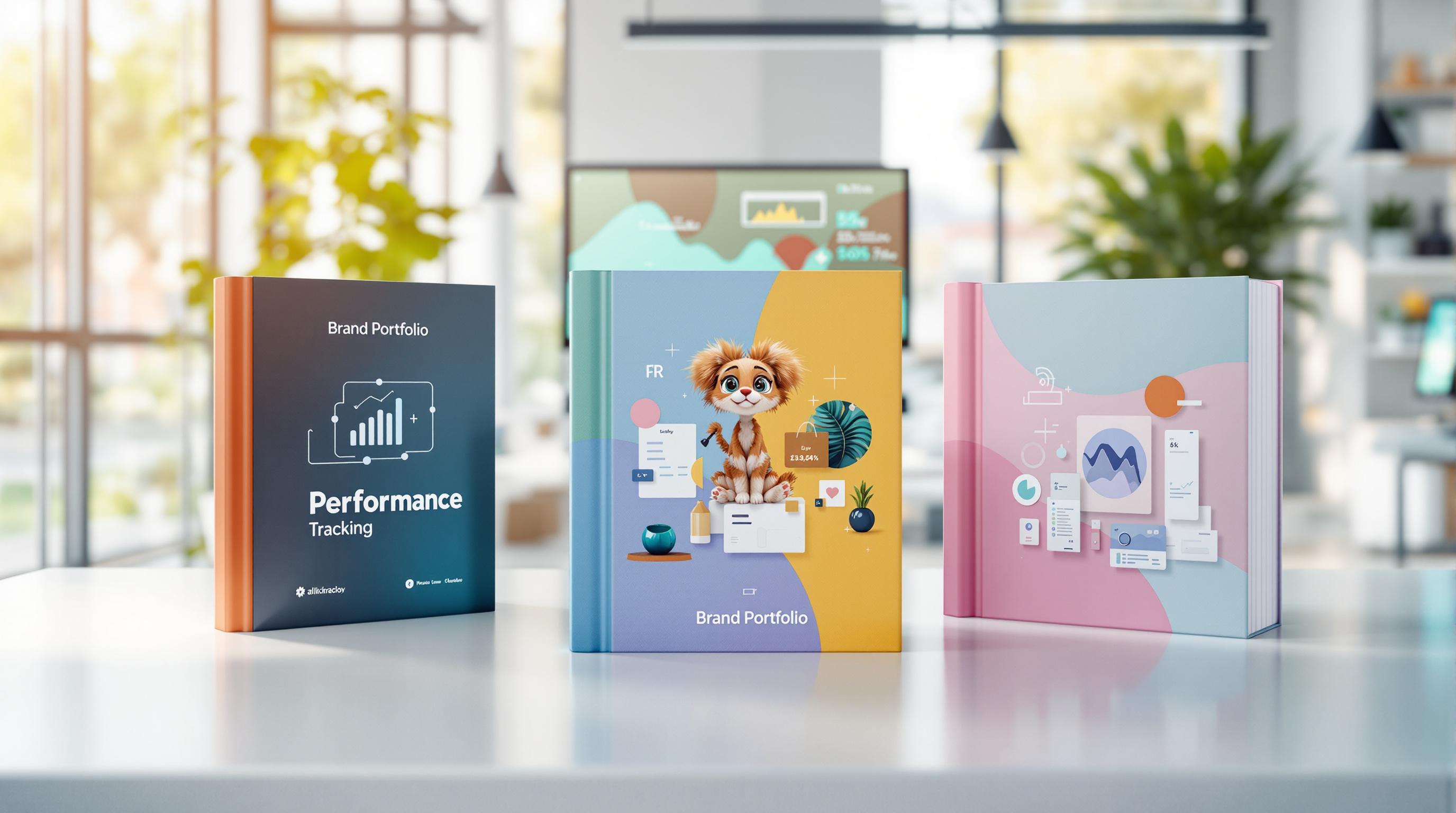AI clustering is changing how businesses segment their customers by using advanced algorithms to analyze large datasets. Here's why it matters:
- Better Segments: AI creates precise customer groups based on real-time data, leading to more relevant targeting.
- Higher Conversions: Businesses report up to a 35% boost in lead conversions.
- Real-Time Updates: Unlike static methods, AI adapts segments instantly as customer behavior changes.
- Efficiency: Automates analysis, saving time and improving resource allocation.
Key AI Methods:
- K-Means: Groups companies by metrics like revenue and industry.
- DBSCAN: Handles noisy data and finds natural clusters.
- Neural Networks: Combines data from multiple sources for deeper insights.
AI-driven segmentation delivers measurable results, like reducing churn by 15% or boosting campaign ROI by 20%. It’s a smarter, faster way to understand and engage your customers.
How to Build Customer Segments with AI (Real-World Use Case)
AI Clustering Methods and Tools
B2B segmentation relies on three AI clustering methods to sharpen customer insights. Each method tackles a specific aspect of segmentation, helping businesses target customers more effectively.
Using K-Means for Company Data
K-means groups company data into meaningful segments based on metrics like revenue, employee count, and industry type. It works by measuring the distance between data points and cluster centers, refining these groups until they stabilize.
Here are some key steps involved in implementing K-means:
| Preparation Step | Purpose | Impact |
|---|---|---|
| Data Standardization | Aligns data scales | Ensures balanced results |
| K-Value Selection | Determines cluster count | Adjusts segment detail |
| Validation Metrics | Evaluates cluster quality | Improves accuracy |
For example, a telecommunications company used this method to analyze customer usage patterns, leading to a 15% reduction in churn rates.
DBSCAN for Usage Analysis
DBSCAN (Density-Based Spatial Clustering of Applications with Noise) stands out because it doesn’t require a predefined number of clusters. Instead, it identifies natural groupings in the data and filters out outliers, resulting in cleaner datasets.
This approach has been applied across industries. In logistics, it uncovered operational patterns that improved resource allocation, while in healthcare, it enabled more targeted treatment strategies.
Neural Networks for Data Combination
Neural networks take segmentation to the next level by combining data from multiple sources - like CRM systems and sales records - to generate actionable insights. These models can handle both structured and unstructured data, offering a comprehensive view of customer behavior.
Some real-world examples include:
- AT&T: Achieved a 20% reduction in network downtime.
- BASF: Increased production efficiency by 25%.
- Walmart: Boosted sales by 10% through better stock management.
To get the most out of neural networks, maintaining data quality through regular audits is crucial.
Setting Up AI Clustering Systems
Data Preparation Steps
Getting your data right is the foundation of any successful AI clustering system. In fact, poor data quality can consume up to 90% of project resources. Here's how to address key aspects of data preparation:
| Data Quality Aspect | Action | Impact |
|---|---|---|
| Validity | Eliminate duplicates and fix naming inconsistencies | Improves accuracy in segment identification |
| Completeness | Fill in missing data using imputation techniques | Prevents biased or incomplete cluster analysis |
| Consistency | Standardize formats across all data sources | Ensures reliable pattern recognition |
| Uniformity | Align measurements to the same units | Makes comparisons more accurate |
Once your data is clean and consistent, you're ready to move on to live clustering tools, which can provide real-time insights.
Live Clustering Tools
The B2B Ecosystem's AI Process Optimizer is a great example of a tool that simplifies ongoing customer analysis by seamlessly integrating with your existing CRM and ERP systems.
To get the most out of such tools:
- Begin with a small-scale pilot project to test how well the tool integrates.
- Continuously monitor performance metrics to identify any issues early.
- Set up feedback loops to refine and improve the system over time.
"Integrating AI isn't about forcing new technology onto old systems - it's about reimagining your entire business ecosystem." - Solomon Thimothy, President, OneIMS
System Growth Planning
Once your system is running smoothly, the next step is scaling it to handle growing data demands. Over the past decade, training datasets have grown tenfold, and AI-ready data center power densities have doubled to 17 kilowatts per rack in just two years.
Here’s how to plan for growth:
| Growth Factor | Implementation Strategy | Expected Outcome |
|---|---|---|
| Data Volume | Use distributed computing systems | Efficiently processes larger datasets |
| Processing Speed | Leverage GPU acceleration | Speeds up analysis significantly |
| System Reliability | Deploy across multiple zones | Maintains high availability and minimizes downtime |
To scale effectively, consider gradually increasing resources - adding 25–50 machines at a time. Pair this with GPU acceleration and distributed computing to keep your system responsive, and monitor its performance to ensure stability as demands grow.
sbb-itb-01010c0
Testing and Using Cluster Results
Once you’ve established reliable systems, the next step is to analyze and put your cluster insights to work.
Cluster Quality Checks
To ensure your clusters are meaningful, validate their quality using metrics like the Hopkins statistic and VAT. These tools help confirm whether your groupings are logical and actionable.
| Quality Metric | Purpose | Target Range |
|---|---|---|
| Silhouette Coefficient | Measures how distinct and cohesive clusters are | 0.5–1.0 indicates strong clustering |
| Dunn Index | Evaluates cluster compactness and separation | Higher values show better separation |
| Davies-Bouldin Index | Assesses similarity between clusters | Lower scores indicate better clustering |
Regularly compare cluster results to real-world business scenarios. For instance, businesses that continually update customer profiles can improve segmentation effectiveness by up to 50%.
Matching Results to Goals
Align your clustering insights with specific KPIs to drive measurable results. Companies that use predictive customer insights can achieve 115% higher sales growth compared to those that don’t.
Here’s how clustering impacts key business objectives:
| Business Goal | Clustering Impact | Average Improvement |
|---|---|---|
| Customer Retention | Enhanced targeting | 10–15% increase |
| Campaign ROI | Improved segmentation | Up to 20% boost |
| Customer Lifetime Value | Better targeting of high-value customers | 25% increase |
| Product Development | Faster analytics-driven decisions | 30% faster cycles |
Using Clusters for Sales
Turn your cluster insights into actionable sales strategies. Companies that leverage AI-driven marketing optimization have reduced customer acquisition costs by 42% while increasing conversion rates by 37%.
Take Netflix as an example: they use cluster-based personalization to tailor content artwork to individual preferences. Action fans see dynamic, action-packed images, while comedy enthusiasts are shown humorous scenes from the same title.
To get the most out of your clusters in sales, consider these steps:
- Adopt dynamic segmentation: Keep your clusters updated with fresh data. Businesses using this approach report a 41% boost in customer satisfaction compared to static methods.
- Optimize communication channels: Tailored campaigns based on cluster insights deliver 5–8 times the ROI of generic approaches. Tools like the B2B Ecosystem's AI Process Optimizer can integrate these insights directly into your CRM.
- Monitor and refine: Advanced segmentation analytics can increase engagement by 50%. Use real-time feedback and performance metrics to continuously improve your strategies.
Conclusion
Main Points
AI clustering is reshaping how B2B companies approach customer segmentation, offering a level of precision that translates into measurable business benefits. Companies leveraging AI for segmentation have reported revenue increases of 5%–15% and cost savings of 10%–20%. This leap forward comes from AI's ability to analyze massive datasets and uncover patterns that traditional methods simply overlook.
Here’s a quick comparison of outcomes:
| Key Outcome | Conventional Methods | AI-Enhanced Results |
|---|---|---|
| Customer Insights | Basic segmentation | Multi-dimensional analysis with 90% accuracy |
| Market Response | Quarterly updates | Real-time adaptability |
| Customer Experience | Generic targeting | Precise targeting with 20% higher satisfaction |
These results highlight how AI clustering can transform strategies, enabling businesses to make proactive, data-driven decisions.
Next Steps in AI Segmentation
To stay ahead, businesses need to refine their approach to AI-powered segmentation. This means combining advanced AI capabilities with strong data management practices and a commitment to protecting customer privacy.
Key areas to focus on include:
- Strengthening Data Infrastructure: Standardize your data formats and implement encryption to ensure security.
- Prioritizing Privacy: Use data anonymization techniques and maintain transparent privacy policies.
- Regular Model Updates: Continuously update AI models to reflect changes in customer behavior and market trends.
The future of segmentation lies in predictive modeling, where AI doesn't just analyze current customer behavior but also anticipates what’s coming next. By focusing on these areas, businesses can unlock the full potential of AI-driven segmentation.
FAQs
How does AI clustering make B2B customer segmentation more accurate and effective?
AI clustering takes B2B customer segmentation to the next level by digging into massive datasets to find patterns and connections that traditional methods often overlook. Instead of sticking to basic demographic data or static models, AI leverages advanced algorithms to analyze complex customer behaviors, preferences, and trends as they happen.
This leads to sharper and more flexible segmentation, allowing businesses to craft marketing strategies that truly resonate with their audience. Plus, AI-driven segmentation evolves alongside customer behavior, keeping campaigns relevant and effective. The result? Stronger engagement, higher customer loyalty, and a noticeable boost in ROI.
What challenges do businesses face when using AI clustering for B2B customer segmentation?
Implementing AI clustering for B2B customer segmentation comes with its fair share of hurdles. One major issue is data quality and availability. If the data is incomplete or riddled with inaccuracies, the resulting clusters will likely be unreliable, undermining the entire segmentation process. This is especially problematic when trying to make strategic decisions based on flawed insights.
Another significant challenge lies in the complexity of modern datasets. With the vast scale and high-dimensional nature of today's data, traditional clustering methods often fall short. To manage this, businesses need advanced algorithms that can effectively handle these large and intricate datasets.
System integration is another sticking point. Many businesses struggle to incorporate AI clustering tools into their existing systems. This lack of compatibility can slow down the implementation process or even compromise the tool's effectiveness.
Lastly, there’s the issue of domain expertise. Successfully using AI clustering requires a deep understanding of both the technology itself and the unique characteristics of the B2B market. Without this expertise, teams may find it difficult to unlock the full potential of these tools.
How can businesses protect data privacy and security when using AI for customer segmentation?
To ensure data privacy and security when using AI for customer segmentation, businesses should adopt several key practices.
Start with data minimization - only collect and process the information that's absolutely necessary. This approach reduces the chances of exposing sensitive data unnecessarily. Another effective technique is differential privacy, which involves adding noise to datasets to ensure that individual data points can't be traced back to specific people.
Conducting regular audits of AI systems is also crucial. These audits help pinpoint vulnerabilities and ensure that your operations comply with privacy regulations. Additionally, use strong encryption to protect data both during transmission and while it's stored.
Finally, be transparent with customers about how their data is being used. Clear and accessible policies can go a long way in building trust. By following these steps, businesses can protect sensitive information while making the most of AI tools.


